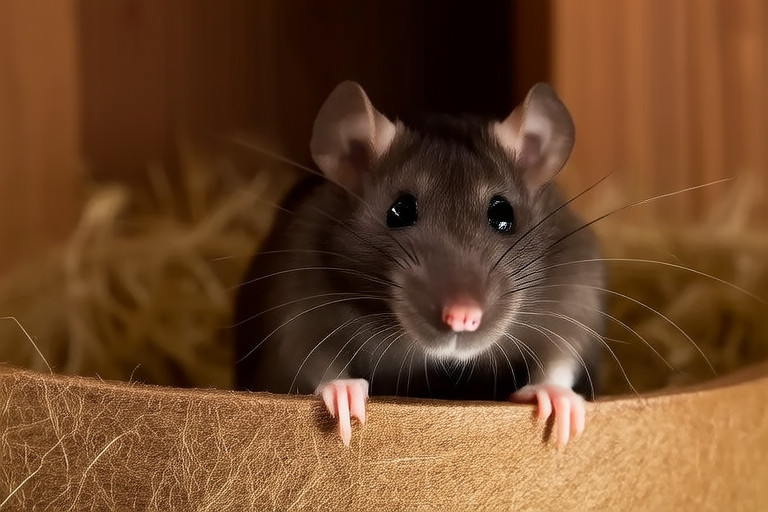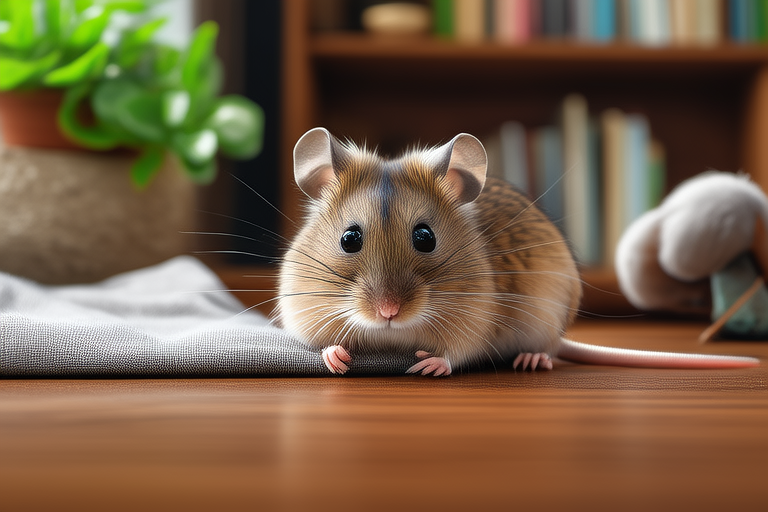
The Hidden World of Fancy Rats: Beyond Surface-Level Interactions
Fancy rats, often overshadowed by more popular pets like cats and dogs, possess an intricate world of behaviors, intelligence, and unique characteristics that are seldom recognized by their human companions. These small creatures, despite their size, exhibit complex social structures, advanced communication methods, and remarkable problem-solving abilities. By delving deeper into the lives of fancy rats, we can appreciate their true nature and enrich their environments accordingly.
Social Structures and Communication Methods
Contrary to popular belief, fancy rats are highly social animals. They live in structured groups known as colonies, where each rat has a distinct role within the hierarchy. Dominance is established through gentle nips, body postures, and vocalizations rather than aggressive displays. This hierarchy ensures order and cooperation among group members, fostering a harmonious living environment.
Rats communicate through a variety of vocalizations, body language, and scent marking. Their ultrasonic calls, which are beyond the range of human hearing, play a crucial role in maintaining social bonds and conveying emotions. For instance, rats emit high-pitched squeaks when they are happy or excited, while lower-pitched sounds may indicate distress or fear. Additionally, rats use scent glands located on their flanks to mark territory and identify other members of their colony. Understanding these subtle cues can help owners foster stronger connections with their pets.
Problem-Solving Abilities and Nocturnal Activities
Fancy rats are intelligent creatures capable of solving puzzles and learning new tasks. They have been observed using tools, manipulating objects, and navigating mazes with ease. Their curiosity drives them to explore their surroundings, investigate novel stimuli, and interact with their environment. Owners can encourage this natural inclination by providing stimulating toys, such as ladders, tunnels, and foraging stations.
As nocturnal animals, fancy rats are most active during the evening and night hours. During daylight, they tend to rest or nap, conserving energy for their nighttime adventures. To accommodate their natural sleep-wake cycle, it’s essential to maintain a consistent routine and avoid disturbing them during their resting periods. Providing a comfortable sleeping area, complete with soft bedding and hiding spots, will ensure that your rat gets the rest it needs.
Enriching the Environment
To stimulate your fancy rat’s natural instincts and promote mental and physical well-being, consider incorporating the following elements into its living space:
- Exercise Wheels: A solid-surface wheel allows rats to run at night without risking injury. Ensure that the wheel is large enough for your rat to stretch out fully and that it rotates smoothly.
- Tunnels and Hideouts: Provide plenty of opportunities for exploration and hiding. PVC pipes, cardboard boxes, and commercially available rat tunnels make excellent additions to any enclosure.
- Foraging Toys: Hide treats inside puzzle feeders or scatter them throughout the cage to encourage natural foraging behavior. This activity mimics the way wild rats search for food in their habitat.
- Chew Toys: Offer safe, non-toxic materials for gnawing, such as untreated wood blocks, cardboard, and safe plastic chew toys. Gnawing helps wear down teeth, prevents overgrowth, and satisfies the rat’s innate urge to chew.
Common Misconceptions About Rats
Despite their growing popularity as pets, many people still hold misconceptions about fancy rats. Here are some common myths debunked:
- Misconception: Rats are dirty and carry diseases.
Reality: With proper hygiene and care, fancy rats are clean animals. Regular cleaning of their enclosures, along with daily handling and interaction, helps prevent the spread of disease. Additionally, rats are meticulous groomers, spending significant time keeping themselves clean. - Misconception: Rats are aggressive and bite frequently.
Reality: While all animals can bite under certain circumstances, rats are generally gentle and docile. Biting is usually a sign of fear, pain, or discomfort. By handling your rat correctly and addressing any underlying issues, you can minimize the risk of bites. - Misconception: Rats are solitary animals and don’t need companions.
Reality: As social animals, rats thrive in pairs or groups. Keeping multiple rats together promotes mental and emotional well-being, reduces stress, and provides companionship. However, it’s important to introduce new rats gradually and monitor their interactions to ensure compatibility.
The Emotional World of Fancy Rats
Fancy rats possess a rich emotional life that goes beyond mere survival instincts. They experience joy, fear, curiosity, and even affection towards their human companions. Rats have been observed displaying empathy towards injured or distressed cage mates, suggesting a level of emotional intelligence that rivals that of larger mammals.
Owners can strengthen their bond with their rats by offering consistent positive reinforcement, gentle handling, and attention. Building trust takes time and patience, but once established, the relationship between a rat and its owner can be incredibly rewarding. Many owners report that their rats recognize them by sight and voice, seek out their presence, and respond positively to affectionate gestures.
Conclusion
Fancy rats are fascinating creatures with complex social structures, advanced communication methods, and impressive problem-solving abilities. By understanding their natural behaviors and enriching their environment, owners can provide a fulfilling and stimulating lifestyle for their pets. Dispelling common misconceptions and recognizing the emotional depth of fancy rats allows us to appreciate these intelligent animals for who they truly are. Ultimately, fostering a strong bond with your fancy rat leads to a mutually enjoyable and enriching experience for both you and your pet.






